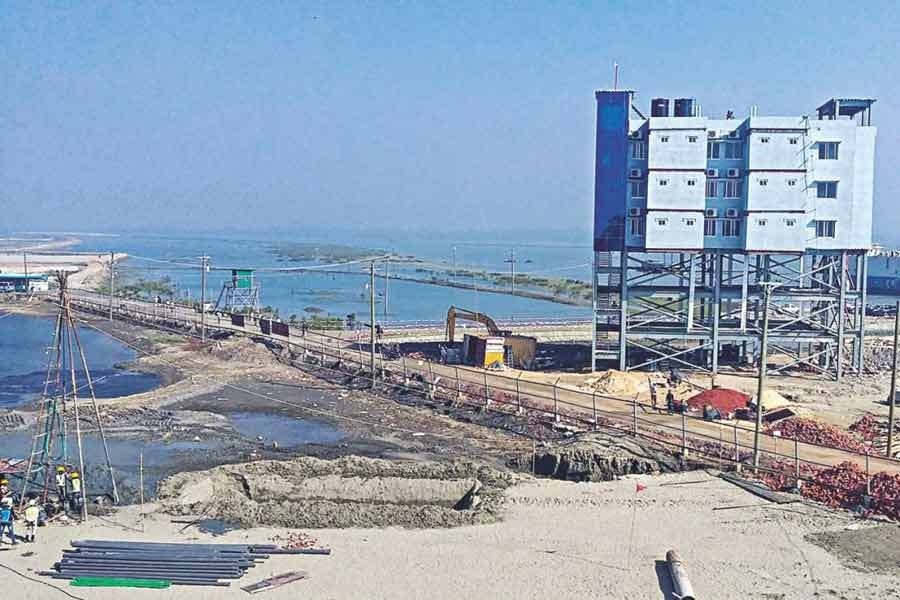The Matarbari deep-sea port will have the highest water draft against similar facilities in Asia, officials said.
The first phase of the port is expected to be completed by 2023 when one jetty for handling containers and one for multipurpose use will be ready, they said.
The information came from a presentation made before Prime Minister Sheikh Hasina last week by the Japan International Cooperation Agency (JICA).
The Japanese donor is funding the Moheshkhali-Matarbari Integrated Development Initiative.
The JICA said Matarbari port will have 18.7-metre deep draft and will be able to accommodate container vessels of 8,200 TEUs (twenty-foot equivalent unit) and bulk carriers of nearly 70,000 deadweight tonnage (DWT).
In Asia, the Hambantota port has 17-metre water draft, the port of Colombo has 15.5-m depth, and the port of Singapore's maximum water draft is 16-metre, according to websites.
The maximum water draft of the port of Jeddah's main channel is 16-metre, the port of Jebel Ali in the United Arab Emirates has water depth of 15.2-metre, and port of Busan's water depth is only 12-metre.
Referring to the presentation, shipping secretary Abdus Samad told the FE the Matarbari deep-sea port is likely to have the capacity to handle vessels of 100,000 DWT.
"Once the Moheshkhali-Matarbari development work is over, one can compare it with Singapore," he said.
But Mr Samad said it will require marketing drive to promote the port.
"This kind of draft will help the port attract a good volume of cargos from other countries," he added.
In the first phase of stage one, according to JICA's presentation, the port will have annual handling capacity of 0.8 million TEUs of containers and 2.5 million tonnes of bulk cargos.
The port will be connected to the national highway and also have access to Chattogram and Cox's Bazar.
In the second phase of stage one, the port will have three jetties ready for container handling and four to six jetties for multipurpose use by 2028.
Meanwhile, its container handling capacity will grow to 2.8 million TEUs and cargo handling capacity will reach 2.5 million tonnes per year.
After the completion of the final stage by 2035, the port will have the capacity to handle 4.8 million TEUs of containers and 16 to 38 million tonnes of bulk cargos.
By 2024, the port will have rail connectivity through Dohazari-Cox's Bazaar line. An inland container depot will also be built by then.
The port's container terminal will have 460-metre berth on 18 hectares of area while the multi-purpose terminal will have 300 metre berth on 17 hectares of area.
By 2035, the container terminal's berth will reach 1,850-metre on 70 hectares area.
Japan has agreed to invest US$20 billion for Moheshkhali-Matarbari initiative, of which half will come from its low-cost ODA (official development assistance). The rest will come as private sector investment.
President of the Exporters Association of Bangladesh (EAB) Abdus Salam Murshedy told the FE earlier with its economy growing rapidly, Bangladesh needs a deep-sea port immediately to handle rising trade.
He said the majority of Bangladesh's export items are destined to the western nations like Europe and America.
"Due to our location, we remain much behind our competitors. Besides, the dependence on feeder vessels to ferry goods further puts us at the back," Mr Murshedy said.
Mr Murshedy said lead time is a big factor to stay competitive in the global market.
"To compete with our competitors we need direct vessels service and a deep-sea port can help us in this case," he noted.


